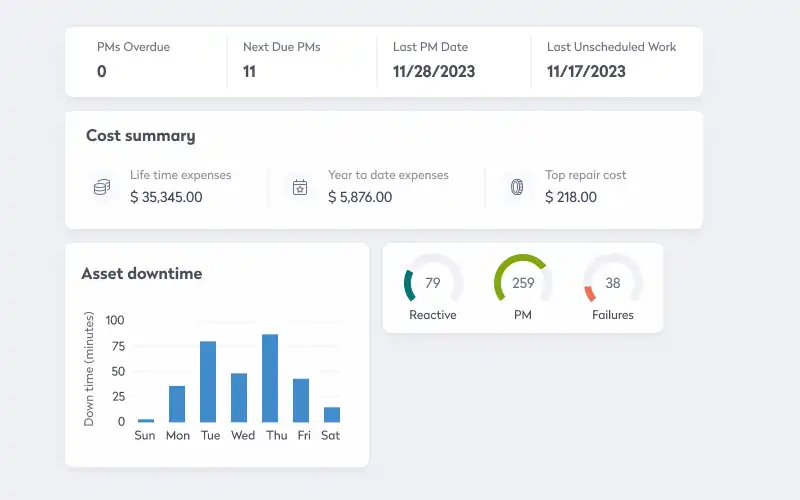This dual responsibility makes close collaboration between facility and IT teams essential for them to reach individual and shared goals. The post Secure systems for smart buildings: FM/IT compliance coordination at government facilities appeared first on Eptura.

Facility managers at government agencies around the world face increasing pressure to meet complex and evolving compliance standards that span both physical and digital infrastructure. In the U.S., for example, these standards include cybersecurity frameworks like the NIST Cybersecurity Framework 2.0, which emphasizes governance, risk identification, and incident response for critical infrastructure systems such as government buildings and utilities. At the same time, agencies must comply with physical security mandates outlined by the Interagency Security Committee (ISC) and Unified Facilities Criteria, which govern risk management and physical access controls in federal facilities.
This dual responsibility makes close collaboration between facility and IT teams essential for them to reach individual and shared goals.
Key takeaways
- As smart building systems increasingly rely on cloud-based infrastructure, facility and IT teams must collaborate to meet evolving regulatory standards. Fragmented oversight creates vulnerabilities that can compromise both physical and digital security
- Modern facility management solutions with secure cloud infrastructure, role-based access controls, and audit-ready reporting help agencies maintain compliance. These systems support real-time monitoring and seamless integration with IT tools, improving visibility and response times
- For U.S. government agencies, FedRAMP provides a trusted framework for evaluating cloud-based solutions. Platforms with FedRAMP authorization have already passed rigorous cybersecurity assessments, helping FM and IT teams confidently choose secure, compliant tools
The process for successful collaboration is ongoing, but the sooner it starts, the easier it is for the teams to help each other reach their individual and shared goals. In fact, collaboration should begin during the software selection process.
How has compliance become a shared responsibility?
The facility management (FM) and IT departments have traditionally operated separately, with one focused on physical infrastructure, the other on digital systems. As government agencies adopt more integrated technologies and face stricter regulatory oversight, though, the boundaries have blurred.
Fragmented systems can create risk
At government facilities, management of physical systems such as access control, HVAC, and maintenance platforms now rely on cloud-based software and network connectivity. These systems generate data, interact with other platforms, and require secure access protocols.
When facility managers deploy these technologies without IT involvement, they risk introducing vulnerabilities that can compromise the entire organization.
Facility platforms that don’t integrate with IT cybersecurity tools make it difficult to monitor threats, enforce access controls, or respond to incidents in real time. It also creates blind spots during audits, where IT teams struggle to produce complete reports because critical facility data lives in separate silos.
The consequences go beyond inconvenience. Regulatory bodies increasingly expect agencies to demonstrate unified security practices across both physical and digital domains. When FM and IT teams fail to coordinate, they can expose their organizations to compliance and operational disruptions.
Cross-functional collaboration supports security
By aligning efforts, FM and IT teams can reduce vulnerabilities across the board. Joint planning enables both groups to identify risks early, implement secure systems, and maintain consistent protocols. Integrated platforms allow for streamlined audits, faster incident response, and better visibility into facility operations.
Collaboration also fosters a culture of accountability. When both teams understand each other’s priorities and constraints, they can make informed decisions about technology investments, policy updates, and operational workflows, and that shared understanding leads to more resilient systems and a stronger defense against compliance breaches.
What does the compliance-first partnership between FM and IT look like?
Compliance in government facilities is about building resilient systems that protect both physical and digital assets. A modern facility management platform plays a critical role in enabling this resilience, especially when FM and IT teams work together.
An example: At a municipal building, outdated access control systems lacked multi-factor authentication and remote monitoring. IT flagged the setup as non-compliant with federal security guidelines. Instead of treating the issue as an isolated IT concern, both teams collaborated to evaluate cloud-based access control platforms.

Their joint decision to implement a FedRAMP-authorized solution ensured alignment with the city’s cybersecurity framework, and the result is a stronger physical security and full compliance without operational disruption.
Another example: At a multi-agency campus, an IT director faced audit challenges due to inaccessible maintenance logs and occupancy data. The facility team used a standalone system that didn’t integrate with IT’s reporting tools.
To close the gap, both teams adopted a unified facility management platform with built-in reporting and API integrations, improving transparency, reduced manual work, and strengthened audit readiness.
Modern FM platforms support compliance
Today’s modern facility management systems help you bridge the gap between FM and IT through secure cloud infrastructure that encrypts and protects data across all endpoints.
Role-based access control limits system access based on user roles, reducing the risk of unauthorized entry. Audit-ready reporting tools automatically generate logs and documentation to support compliance reviews. API integrations allow seamless data sharing with IT systems, while real-time monitoring tracks performance and security events across facilities.
These capabilities enable FM teams to collaborate more effectively with IT, respond quickly to audits, and maintain visibility across multiple locations. They also help organizations align with national and international standards such as FedRAMP, ISO/IEC 27001, and GDPR.
Early alignment is a strategic advantage
When FM and IT teams align early in the technology selection process, they avoid costly retrofits and compliance gaps. Joint planning ensures that every system, whether it controls access, monitors energy use, or manages maintenance, is secure, scalable, and audit ready.
The partnership fosters shared accountability, where both teams own the outcomes of compliance efforts. It also supports informed decision-making, as technological investments reflect both operational and security needs. With integrated systems in place, organizations benefit from greater efficiency, reduced duplication, and stronger defenses against emerging threats.
In a regulatory environment that continues to evolve, proactive collaboration between FM and IT is no longer optional. It’s foundational.
What should FMs look for in compliance-ready facility management software?
Selecting the right facility management software is a critical step in building a secure, compliant operation, especially in government settings. When FM and IT teams evaluate solutions together, they need to consider both operational functionality and regulatory alignment.
Role-based access controls
Access control is critical for both physical and digital security. IT teams prioritize role-based access because it limits exposure by ensuring only authorized users can view or modify sensitive data. For FM teams, this means maintenance staff, contractors, and administrators can operate within clearly defined permissions, reducing risk and improving accountability.
Audit-ready reporting
Compliance requires documentation. IT teams need systems that can produce detailed logs and reports for internal reviews and external audits.

A facility management platform with built-in reporting tools helps FM teams track work orders, asset histories, and occupancy data in formats that align with audit requirements, reducing manual effort and ensures consistency across departments.
Secure cloud infrastructure
IT teams look for platforms with end-to-end encryption, continuous monitoring, and secure hosting environments. These features protect sensitive facility data, from access logs to maintenance records, and ensure resilience against cyber threats. FM teams benefit from knowing their operational data is protected without needing to manage the technical details themselves.
IT system integrations
Seamless integration with existing IT systems is essential for centralized oversight. APIs and connectors allow facility data to flow into broader security and analytics platforms, giving IT teams full visibility. For FM teams, this means less duplication, faster workflows, and better coordination with cybersecurity protocols.
By prioritizing these capabilities, FM and IT teams can confidently select a facility management solution that supports compliance, strengthens collaboration, and prepares the organization for future regulatory demands.
Why does FedRAMP matter for facility software selection?
Facility teams need tools that support secure operations across multiple locations, while IT teams must ensure that every system meets strict cybersecurity and compliance standards.
The Federal Risk and Authorization Management Program (FedRAMP) sets a government-wide standard for assessing and authorizing cloud services.
For facility and IT teams evaluating new software, it offers a trusted, streamlined path to compliance.
Instead of starting from scratch, teams can use FedRAMP authorization as a signal that a platform has already passed rigorous third-party cybersecurity assessments and meets NIST-based controls. It simplifies the vetting process for IT and gives FM teams confidence that the solution is secure, scalable, and built for government operations.
And while FedRAMP is specific to the U.S., its principles align with global benchmarks like ISO/IEC 27001 and GDPR. For agencies outside the U.S., these standards offer a reliable guide for selecting software that meets regional compliance requirements.
Where can FMs learn more: Government security conferences in November 2025
For FM and IT professionals in government settings, November offers several opportunities to strengthen compliance strategies and build cross-functional partnerships.
These events deliver practical insights, peer-tested approaches, and exposure to technologies shaping secure facility operations.
GOVIT Leadership Summit & Symposium: Nov. 18–20 in Bloomington, Minnesota
The longest running IT conference for state and local government, and this year’s theme focuses on collaboration, cybersecurity, and emerging tech like AI. FM teams can benefit from sessions on accessibility compliance and digital inclusion for public infrastructure.
ISC East: Nov. 18–20 in New York City
Held at the Javits Center, ISC East features more than 70 sessions on physical security, IT integration, and emerging tech. FM teams can explore access control, IoT devices, and compliance strategies tailored to multi-site operations, with networking events for peer exchange.
Government Innovation Showcase Colorado: Nov. 19 in Denver, Colorado
This one-day forum explores how innovation drives smarter governance. FM professionals will find value in sessions on IT modernization, infrastructure upgrades, and aligning operations with cybersecurity and citizen engagement goals.
For those outside the U.S., these conferences offer virtual sessions and global insights into how public sector organizations are adapting to regulatory demands and building smarter, safer facilities.
Compliance starts with collaboration
Meeting compliance standards in government facilities isn’t just about checking boxes—it’s about building systems that are secure, transparent, and resilient. That kind of infrastructure doesn’t happen in isolation. It takes facility and IT teams working together from the start, aligning goals, sharing data, and choosing technology that supports both operational needs and regulatory demands.
The post Secure systems for smart buildings: FM/IT compliance coordination at government facilities appeared first on Eptura.







